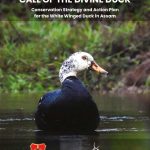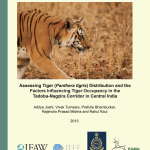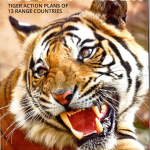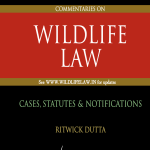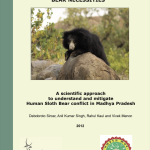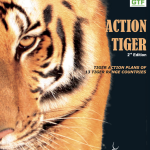Exploring the threatened frogs of Eravikulam National Park, Munnar
Nestled in the Western Ghats of southern India, Eravikulam National Park is an undulating landscape of mist-covered hills and rain-soaked grasslands, flecked with patches of dense montane shola forests. At an elevation of over 2200 m above sea level, the air up here remains cool, seldom exceeding 20°C even in the summer. Clouds and drizzle are ever-present, feeding the numerous streams that originate in the shola forests and creating an ethereal environment. During the monsoon months, the sky is nearly always overcast, with the low-hanging clouds obscuring everything in a soft veil of mist.
A walk through this landscape is an experience not to be missed, especially during the monsoon season. Even in this open landscape, the tropical forests harbour a host of challenges including the blood-sucking leeches and stinging nettles. The well-trodden forest paths can get slippery but if you look past these minor inconveniences, the beauty of this landscape is unparalleled. The seemingly endless rolling grasslands, with their light green hues contrasting against the deep dark green of the shola forests, are interspersed with crystal clear streams that support a variety of life, including some of the rarest amphibians on the planet. Amidst this beautiful landscape, we embarked on a little mission: to find some truly unique, endangered frogs that are endemic to this region.

Kodaikanal Bush Frog (Raorchestes dubois) | Dr. Harikrishnan S/WTI
First on our list was the aptly named resplendent bush frog (Raorchestes resplendens), a species found only in the high-elevation shola grasslands of the Munnar landscape. We expected to find it with relative ease as it was supposed to be common in the grasslands of Eravikulam. However, we soon realized that this was not the case. While we could hear their rhythmic piping calls, sighting them proved to be quite tricky. The grass where these frogs called from was wet, deep, thick, and tangled, making them nearly impossible to see. It felt like we were searching for the quintessential needle in a haystack. Moreover, their calls had a ventriloquist quality, making it hard to pinpoint their exact location. After hours of searching, we finally spotted one late at night. The tiny (~2 cm) frog was perched on a blade of grass and calling out into the darkness.
Our second target, the Shola night frog (aka Deccan night frog (Nyctibatrachus deccanensis), was known to live in the shola forests of these mountains. They are cryptic, with dark bodies that blend with the rocks, leaf litter, and shadows of the forests and streams they inhabit. Day-time searches in these dense forests revealed nothing of their presence but as night fell, we found our first Shola night frog – curiously hiding under my bag, I had briefly set down. Upon close inspection, we noted a striking contrast: the frog’s dorsal side was dark while its underside was a vibrant orange. We encountered many more of them in the forest stream, always in the crystal clear shallow waters. This species has been known from only a handful of recorded sightings, and each observation that we made of these elusive frogs was incredibly precious to help us understand better the species and its habitats.

Resplendent shrub frog (Raorchestes resplendens) in Eravikulum NP, Munnar | Photograph by Sreenanth K/WTI
We found several other curious amphibians during this trip to these grasslands, such as the highly endangered cold stream dancing frogs (Micrixalus frigidus) and the dark-bellied dancing frogs (Micirixalus nigraventris), inhabiting the same shola-forest streams as the Shola night frogs. As a group, dancing frogs (Micrixalus sp.) are among the top ten Threatened groups of amphibians in the world. They are unique in their habitat preferences and behaviour, usually favouring shallow streams in closed forests. They perch on rocks in the stream and “foot-flag”, extending their legs and spreading out the webbing to signal to mates and rivals, which to the imaginative eye, can look like a form of dance. Out in the grasslands, resplendent bush frogs share their home with the more common, yet no less beautiful Kodaikanal bush frogs (Raorchestes dubois). These frogs boast an astonishing variety of stunning colours and patterns.

Shola forest of Eravikulum National Park, Munnar | Photograph by Sreenanth K/WTI
As picturesque as the Eravikulam landscape is, it is not without conservation challenges. The shola grassland-forest ecosystem is delicate, and even small disturbances can have a disproportionate effect on the species that inhabit it. Invasive plant species such as bracken ferns (Pteridium sp.) are a major threat to the grassland ecosystem. Climate change also looms as the most significant long-term threat. Changing rainfall patterns and rising temperatures can drastically alter the local conditions for endemic amphibian species. Their sensitivity to moisture and temperature makes them particularly vulnerable to such changes.

Shola or Deccan Night Frog (Nyctibatrachus deccanensis) | Photograph by Harikrishnan S/WTI
Amphibians are often overlooked in larger conservation efforts but are critical to the ecosystems. Species like the resplendent bush frog are not only major indicators of a healthy environment but also part of the web of life that sustains this beautiful shola-grassland ecosystem. Any decline in their numbers would be indicative of broader ecological problems that the grasslands face. Conservation of such species requires a multifaceted approach, which includes protection and restoration of habitats, controlling the spread of invasive species, and finding measures to mitigate the impacts of climate change. Many of these species are elusive and poorly known, making continued research and monitoring fundamental for their conservation.
Dr. Harikrishnan S leads WTI’s Amphibian Recovery Project in Munnar which is supported by Synchronicity Earth.


